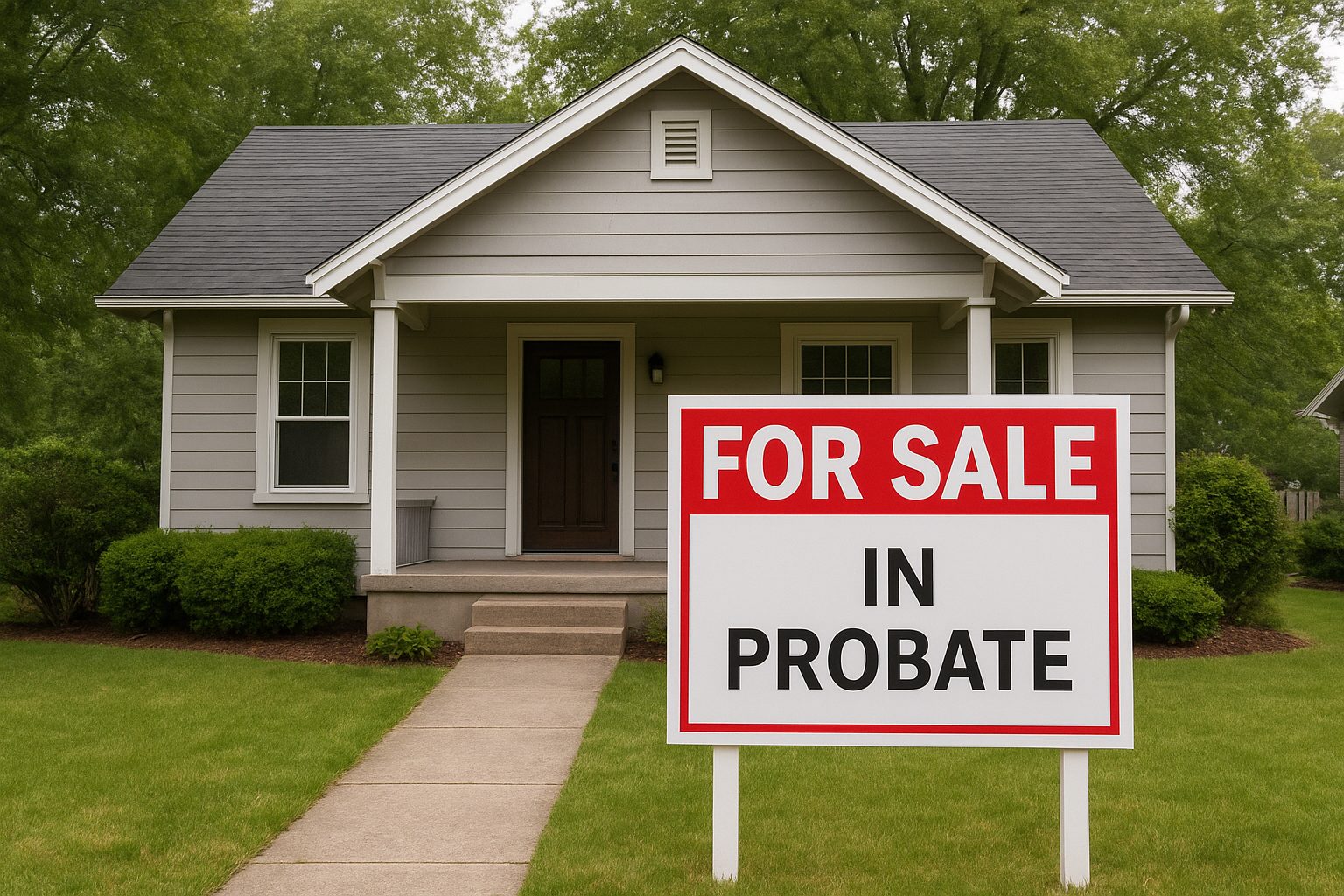
Social Links Widget
Click here to edit the Social Media Links settings. This text will not be visible on the front end.
How to Overcome The Common Fears When Selling Your House.

✅ Seller’s Moving Timeline: What to Plan For After Your House Sells

📅 Right After Accepting an Offer (4–6 Weeks Before Closing)
-
Hire a reputable moving company or reserve a rental truck.
-
Begin decluttering — donate, sell, or discard items you don’t plan to take.
-
Gather important documents (closing paperwork, warranties, utility account numbers).
-
Schedule final repairs or agreed inspection items.
📦 3–4 Weeks Before Closing
-
Start packing non-essentials (out-of-season clothing, decorations, books).
-
Notify post office of your change of address.
-
Update addresses with banks, credit cards, subscriptions, and insurance.
-
Arrange for utility transfers (gas, water, electricity, internet).
🚚 2 Weeks Before Closing
-
Confirm moving company/truck rental and get written confirmation.
-
Begin packing daily items you can live without for a short time.
-
Set aside valuables (jewelry, documents) to transport personally.
-
If moving far: confirm travel arrangements for pets, vehicles, and family.
📋 1 Week Before Closing
-
Finish packing the majority of your belongings.
-
Label all boxes clearly by room.
-
Set aside a “moving essentials box” with toiletries, clothes, chargers, and kitchen basics.
-
Double-check all utility transfer dates.
🏠 1–2 Days Before Closing
-
Do a deep clean of the home (or hire cleaners).
-
Remove all personal property unless otherwise agreed in writing.
-
Walk through the home and check closets, attic, basement, garage, and shed.
-
Gather keys, garage remotes, and manuals to leave for the buyer.
🔑 Day of Closing / Move-Out
-
Pack final items and load the moving truck.
-
Take meter readings (gas, electric, water) for your records.
-
Leave the house in broom-swept condition.
-
Hand over keys, garage openers, and codes at closing.
🎉 After the Move
-
Confirm all mail forwarding is active.
-
Verify utilities are shut off at your old home and active at your new one.
-
Celebrate your next chapter!
Here’s a Link for FREE Guide
Selling Your Home: Common Fears & How I Solve Them

- Fear: Not getting the price I want.
Solution: I provide a detailed market analysis and pricing strategy to position your home competitively and maximize your return.
- Fear: Overpricing and sitting on the market.
Solution: My pricing approach balances market data with buyer psychology to attract strong offers quickly.
- Fear: High agent commissions.
Solution: My marketing plan is designed to net you more money overall — often covering my fee and then some.
- Fear: Lack of control in the process.
Solution: You stay in the driver’s seat. I guide, advise, and execute — but all decisions are yours.
- Fear: Poor communication.
Solution: I provide weekly updates and real-time feedback so you’re never left wondering what’s happening.
- Fear: Weak marketing.
Solution: Professional photos, video tours, targeted online ads, and Century 21’s global reach ensure your home stands out.
- Fear: Showings disrupting daily life.
Solution: I help coordinate a showing schedule that works for you — with lockbox security and notice in advance.
- Fear: Spending too much on repairs/staging.
Solution: I’ll advise only on improvements that bring real ROI — and connect you with trusted pros when needed.
- Fear: Hidden surprises (inspections, appraisals, financing).
Solution: I anticipate obstacles early, negotiate proactively, and keep deals moving to the closing table.
- Fear: Being stuck with the wrong agent.
Solution: My “Win-Win or No Deal” promise means I’m committed to earning your trust every step of the way.
Suburban Lifestyle Shifts: Why Families Are Choosing Macomb & Oakland Counties Over the City

Over the past few years, the real estate market has been driven not just by interest rates and inventory, but by lifestyle shifts. Families are rethinking what they need most in a home—and increasingly, that means making the move from city living into suburban communities like Macomb and Oakland counties.
1. More Space, Indoors and Out
Buyers today are prioritizing homes with extra bedrooms, finished basements, and bigger yards. With hybrid work still common, the ability to have a home office—or two—has become a must-have. Suburban neighborhoods offer that space at a more attainable price point compared to downtown areas.
2. Strong Schools and Family-Friendly Communities
Education is a major driver. Top-rated school districts in Rochester, Troy, Utica, and Chippewa Valley continue to attract families who want long-term stability and strong community ties. Many buyers see their home purchase as both a financial investment and an investment in their children’s future.
3. Lifestyle and Convenience
Macomb and Oakland suburbs strike a balance: close enough to enjoy Detroit’s cultural and business opportunities, yet offering a quieter pace of life. Areas like Royal Oak deliver walkability and nightlife, while Shelby Township and Sterling Heights provide larger homes, trails, and family-friendly parks.
4. Long-Term Value and Growth
Demand for suburban living isn’t slowing down. Even as the broader housing market balances out, the popularity of these counties is helping to stabilize home values. For homeowners, that means stronger long-term equity growth and consistent demand.
✅ Takeaway: The shift toward suburban living is more than a passing trend—it’s a reflection of how families are reshaping their priorities. If you’ve been considering a move within or to Oakland or Macomb County, now is the time to explore your options.
👉 If you’d like to see a breakdown of what your home could be worth in today’s market—or explore the best neighborhoods for your next move—let’s connect.
How Property Taxes Change After Purchase in Michigan
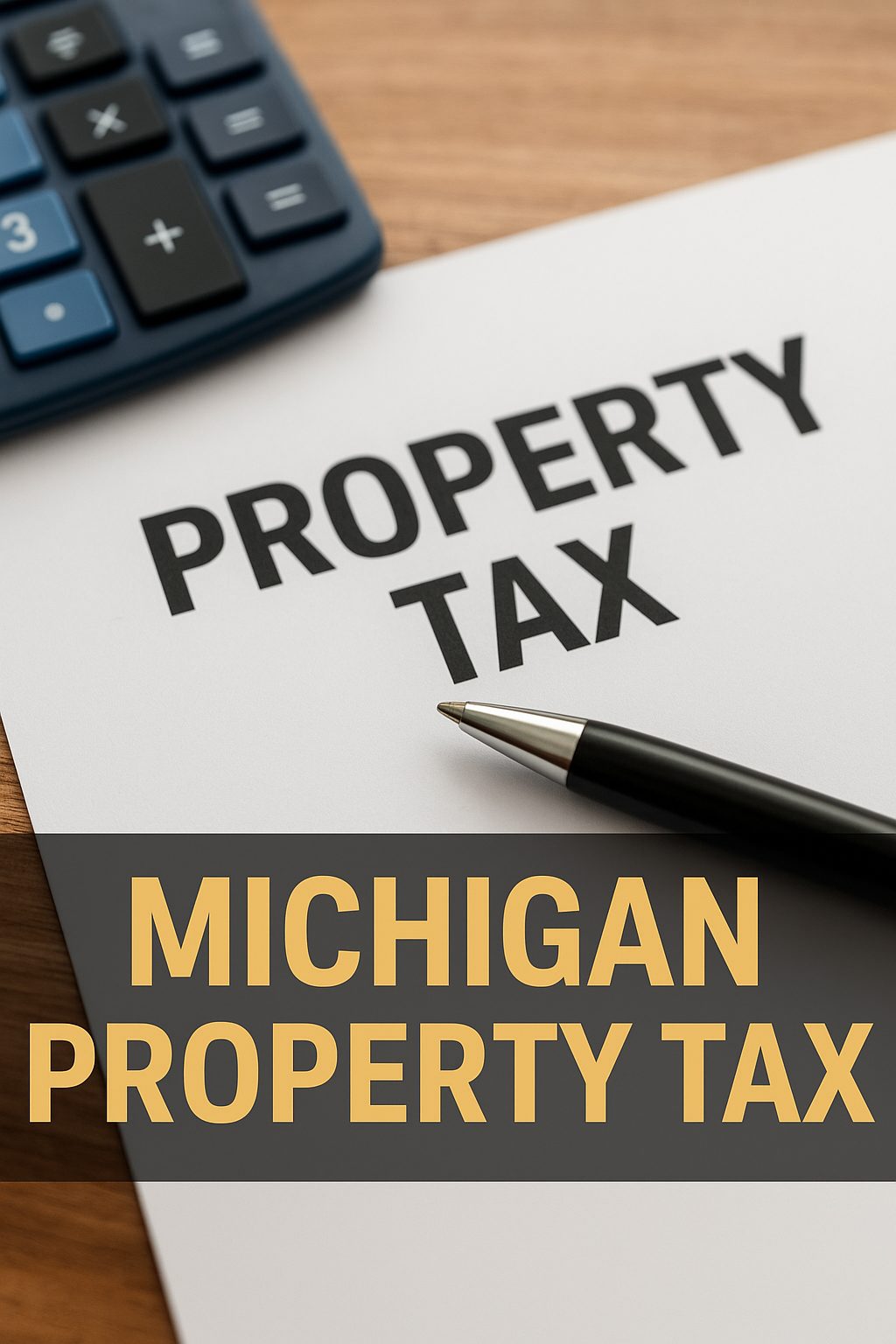
In Michigan, when you buy a home that has been owned by the previous owner for many years, your property taxes are likely to increase significantly—often referred to as “property tax sticker shock.” Here’s why that happens and what it could mean for you:
1. Capping and Uncapping: The Tax Mechanics
-
Michigan uses a system where a home’s taxable value is capped—limited to increasing by inflation or 5% annually, whichever is lower, as long as ownership doesn’t change. This is a benefit of long-term ownership. Smith BovillGreater Lansing MLS
-
When the property changes ownership, this cap is lifted (“uncapped”), and the taxable value is reset to match the State Equalized Value (SEV)—which is approximately 50% of market value. City of SouthfieldSmith BovillGreater Lansing MLSMichigan.gov
-
The result? Buyers often face a big jump in taxable value—and thus tax bills—starting the year after purchase. City of Southfieldcherylclossick.comGreater Lansing MLS
2. Real-World Example
-
Say a home has an assessed value of $100,000 (50% of market value) but for decades, the taxable value was capped at $75,000.
-
After purchase, the taxable value resets to $100,000 (reflecting the SEV), resulting in a higher tax base—and higher taxes. City of SouthfieldGreater Lansing MLS
3. Local Homeowner Experiences
Local Michigan homeowners often report steep increases in property taxes post-purchase:
“Yeah, it’s quite common for property taxes to double or even triple after your first year of ownership because of uncapping.” Reddit
“Taxes always jump significantly a year after you’ve owned… For year three, you owe the increase… and the bank wants it all caught up.” Reddit
“We moved into a new house… paid $2500… fast forward… taxes are $3900. Tax uncapping—year after sale.” Reddit
Summary Overview
| Factor | Description |
|---|---|
| Tax Cap | Capped at 5% or inflation for long-term owners—results in low taxes. |
| Uncapping | Upon purchase, taxable value resets to SEV (uncapped)—higher taxes result. |
| Buyer Impact | Likely property tax increase in the following tax year. |
| Why It Happens | Michigan’s Proposition A rules on property tax assessment. |
Takeaway for Buyers in Oakland & Macomb Counties
If you’re purchasing a home that’s been owned for 7+ years:
-
Don’t base your tax estimate on the seller’s past tax bill.
-
Expect the taxable value to be reset to SEV in the next tax year, which means higher taxes. Axioscherylclossick.com
-
For budgeting, use the current SEV as a guide—not the historical taxable value.
Disclaimer
I am not a tax advisor or attorney. The information provided regarding Michigan property tax “uncapping” is intended for general educational purposes only and should not be relied upon as legal or tax advice. Property tax laws can vary by municipality and are subject to change. Buyers and sellers should verify current tax rates and assessments directly with the local assessor’s office and consult with a qualified tax professional, attorney, or accountant for advice specific to their situation.
🏡 6 Key Steps to a Successful Home Sale

Use the link below to watch a video to learn how to “Dress Your House for Success” password: Joseph018
-
Pre-Sale Preparation
-
Declutter, clean, and complete minor repairs
-
Stage the home for maximum appeal
-
-
Pricing Strategy
-
Review a Comparative Market Analysis (CMA)
-
Set a competitive, market-driven price
-
-
Marketing the Property
-
Professional photography & video
-
MLS listing, online promotion, open houses, and targeted buyer outreach
-
-
Showings & Buyer Interest
-
Flexible scheduling for private showings
-
Collect buyer feedback to adjust strategy if needed
-
-
Negotiation & Offer Management
-
Evaluate offers (price, contingencies, timelines)
-
Negotiate to secure the best terms for the seller
-
-
Closing the Sale
-
Coordinate inspections, appraisals, and lender requirements
-
Guide the seller through paperwork until closing day
-
A House Lifespan
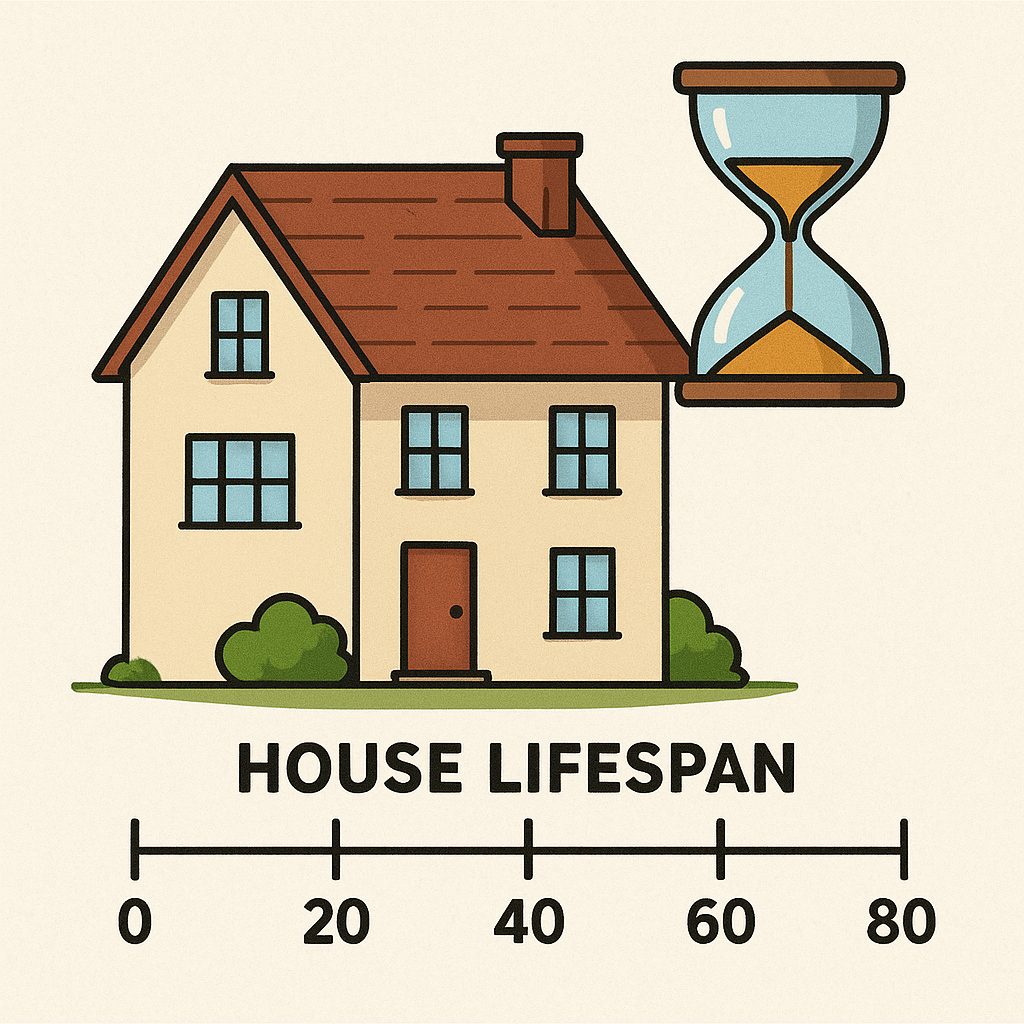

Average Lifespan of Residential Home Components (New Construction)
Based on U.S. construction data, NAHB research, and building material studies. Lifespans
assume proper installation and maintenance.
Overall House Structure
Component Average Lifespan
- Well-built new construction home 70–100+ years
- High-quality masonry/concrete homes 100–150+ years
- Manufactured/modular homes 30–55 years
Structural Components
Component Average Lifespan
- Foundation (poured concrete) 80–100+ years
- Framing (wood) 80–100+ years
- Roof Structure (trusses, rafters) 80+ years
- Exterior Brick/Masonry 100+ years
- Stucco 50–80 years
- Vinyl Siding 25–40 years
- Fiber Cement Siding 30–50 years
Exterior Features
Component Average Lifespan
- Asphalt Shingles (architectural) 25–30 years
- Asphalt Shingles (3-tab) 15–20 years
- Metal Roofing 40–70 years
- Wood Windows 30+ years
- Vinyl Windows 20–40 years
- Exterior Doors 30–50 years
Interior Systems
Component Average Lifespan
- HVAC System 15–25 years
- Water Heater (tank) 8–12 years
- Water Heater (tankless) 20+ years
- Plumbing (copper) 50–70 years
- Plumbing (PEX) 40–50 years
- Electrical Wiring 70+ years
Finishes & Fixtures
- Interior Paint 5–10 years
- Carpet 8–10 years
- Hardwood Flooring 50–100 years
- Tile Flooring 75–100 years
- Kitchen Cabinets 50 years
- Countertops (laminate) 10–20 years
- Countertops (stone) 50+ years
August 2025 Newsletter

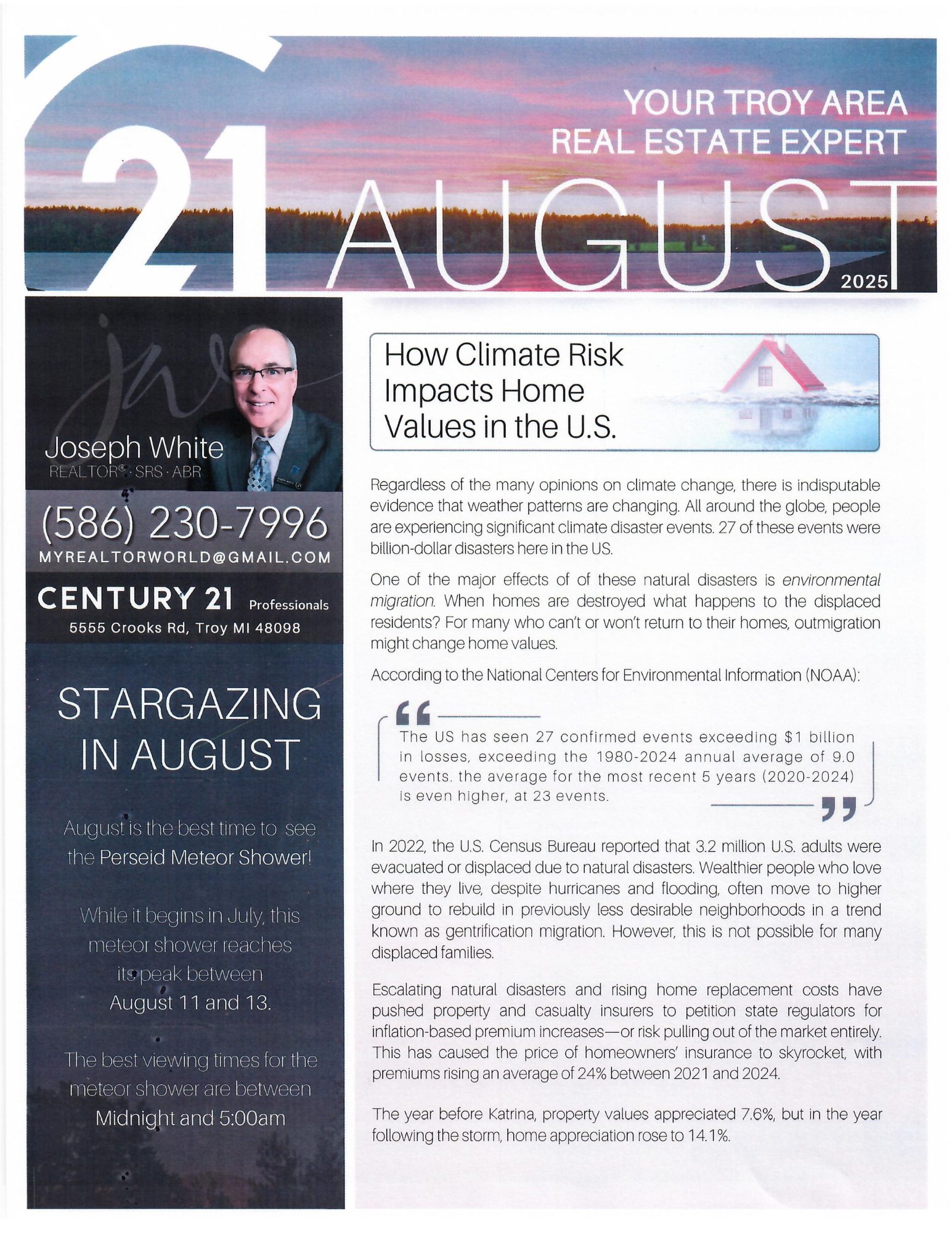

Checklist of Condominium Documents Needed for Mortgage Loan
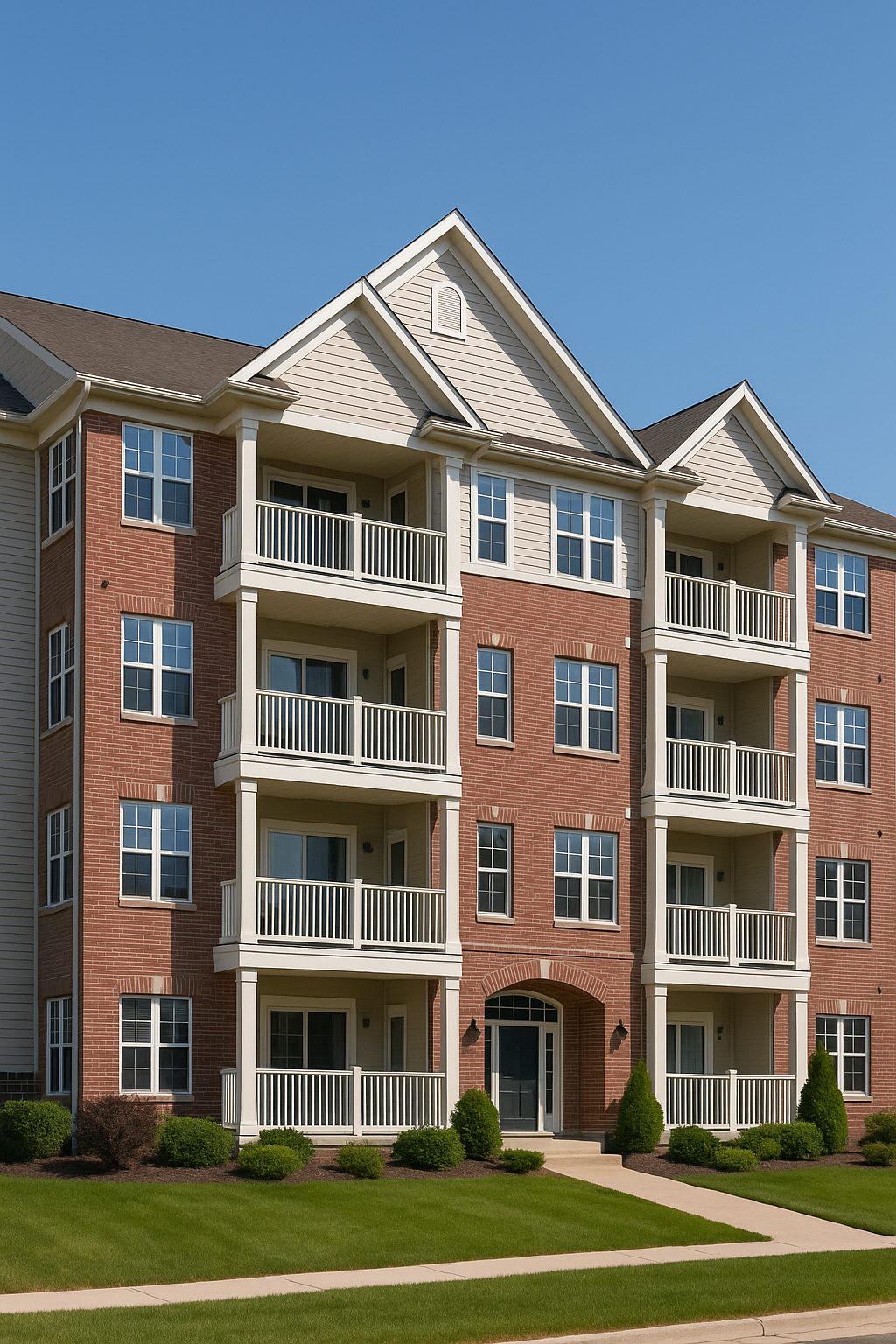
Here’s a handy Checklist of Condominium Documents typically required by a mortgage lender when a buyer is purchasing a condo in Michigan. These documents help the lender determine whether the condo association and property meet financing guidelines (especially for FHA, VA, or conventional loans like Fannie Mae/Freddie Mac).
✅ Condo Documents Needed for Mortgage Loan in Michigan
🔹 From the Homeowners Association (HOA) or Condo Management Company:
-
Condominium Master Deed
-
Condominium Bylaws and Amendments
-
Condominium Declaration (if separate from bylaws)
-
Articles of Incorporation of the HOA
-
Current HOA Budget (usually for the current fiscal year)
-
HOA’s Year-End Financial Statements (income, expenses, reserves)
-
HOA Reserve Study (if available)
-
Master Insurance Policy Declaration Page
-
Fidelity Bond or Crime Insurance Policy (for associations with employee access to funds)
-
HOA Certificate or Questionnaire (lender-provided or industry standard form — see below)
-
Occupancy Breakdown (number of units: owner-occupied vs. rental)
-
Delinquency Report (percentage of units behind on dues — often must be under 15%)
-
Pending or Ongoing Litigation Statement (if applicable)
🔹 From the Buyer or Seller (as part of purchase agreement):
-
Signed Copy of the Condominium Disclosure Statement
-
Association Contact Info (for lender follow-up)
🔹 Common Lender Forms (typically requested):
-
Fannie Mae Form 1076 / Freddie Mac Form 476
(aka Condo Project Questionnaire – Full or Limited Review) -
Limited Review Eligibility Certification (if applicable)
-
FHA or VA Condo Approval Certificate (if using FHA/VA loan)
📌 Disclaimer – Mortgage Loan Documentation for Condo Purchases in Michigan
The following list of documents is provided for informational purposes only and is based on commonly required items for condominium mortgage loans in the state of Michigan. Requirements may vary depending on the lender, loan type (Conventional, FHA, VA, etc.), and the specific condominium association or project. Buyers should consult directly with their mortgage lender or loan officer to confirm the exact documentation needed for their loan approval.
Joseph White and Century 21 Professionals are not lenders and do not guarantee loan approval or the acceptance of any specific documentation. Always refer to your lender’s official loan document request list and timelines.


 Facebook
Facebook
 X
X
 Pinterest
Pinterest
 Copy Link
Copy Link
